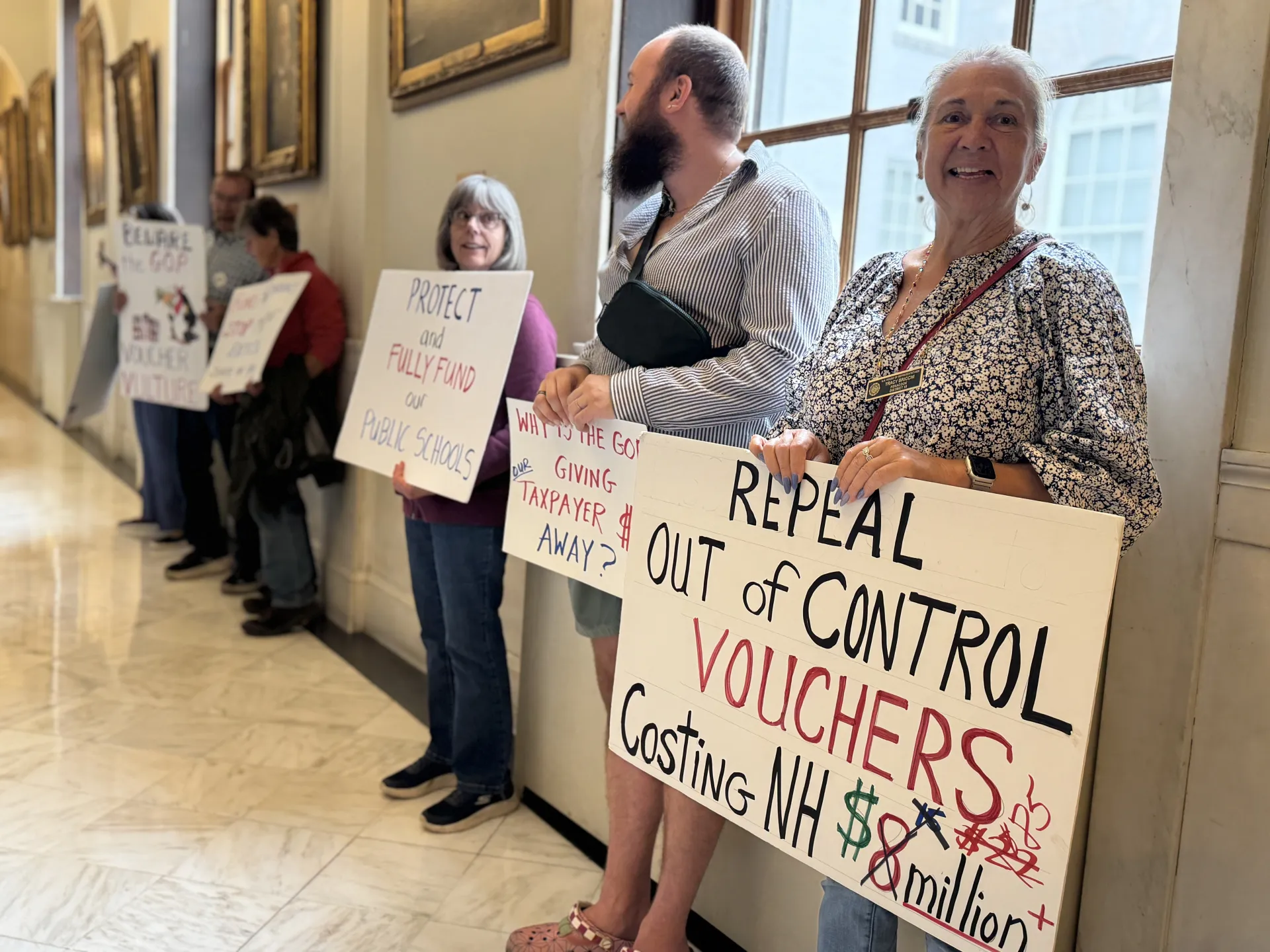ONCORD, NH – Today, Governor Kelly Ayotte signed SB 295 into law. The bill eliminates income eligibility requirements for the state’s unaccountable private school voucher program and institutes a universal voucher scheme that will divert millions of public dollars from public schools to subsidize private education for wealthy families.
Megan Tuttle, President of NEA-New Hampshire, provided the following statement after the votes:
“All students deserve a high-quality education and the support they need to thrive. Unfortunately, expanding the unaccountable voucher scheme will exacerbate the already inequitable public education funding system in New Hampshire. Limitless vouchers will take millions of dollars out of public schools to subsidize private school education for a few at the expense of nearly 90% of students who attend community public schools.
Despite this discouraging development, New Hampshire educators and families will continue to advocate for policies and budgets that provide schools resources based on what students need instead of the current system of picking and choosing who has what based on where they live. Our kids are counting on us.”
Background:
- New Hampshire’s Current Voucher Program:
- New Hampshire’s voucher program was launched in 2021 and permits families to use taxpayer funds to pay for tuition or costs associated with private schools, homeschool, and other non-public school options.
- Funds to cover vouchers – which will cost an estimated $24 million this year alone – come directly from the Education Trust Fund.
- A recent analysis from Reaching Higher NH indicates that expanding our voucher program with no income limit could cost the state over $100 million dollars per year.
- Current eligibility requirements for New Hampshire’s school voucher program include that the child must be at least 5 years old and no more than 20 years old, and entering Kindergarten through 12th grade.
- As part of the 2023 state budget, lawmakers increased the income threshold for voucher eligibility to 350% of federal poverty level.
- According to data from the NH Department of Education, enrollment in the voucher program reached 5,321 participants in the start of September of 2024, with a forecast of at least $27.6 million for this fiscal year.
- According to Reaching Higher NH, based on data provided by NH DOE, fewer than half (44%) of students enrolled in the voucher program this year are classified as low-income, down from 54% when the program launched in 2021.
- According to The Concord Monitor, nearly 90% of voucher dollars spent on tuition went to religiously affiliated private schools.
- Additional Voucher Information:
- When states collect data on students who use school vouchers, those students do not report improved outcomes compared to their publicly educated peers. In fact, in a study on the impact of the Indiana Choice Scholarship Program, they performed worse after participating in their state school voucher program – which is consistent with findings in other states.
- Recent research out of Stanford University further validates that “school choice” policies only increase segregation. You can read more about Stanford’s research at this link: 70 years after Brown v. Board of Education, new research shows rise in school segregation.
###
About NEA-New Hampshire
NEA-New Hampshire is the largest union of public employees in the state. Founded in 1854, the New Hampshire State Teachers Association became one of the “founding ten” state education associations that formed the National Education Association in 1857. Known today as NEA-NH, and comprised of more than 17,000 members, our mission to advocate for the children of New Hampshire and public-school employees, and to promote lifelong learning, remains true after more than 165 years. Our members are public school employees in all stages of their careers, including classroom teachers and other certified professionals, staff and instructors at public higher education institutions, students preparing for a teaching career, education support personnel and those retired from the profession.
